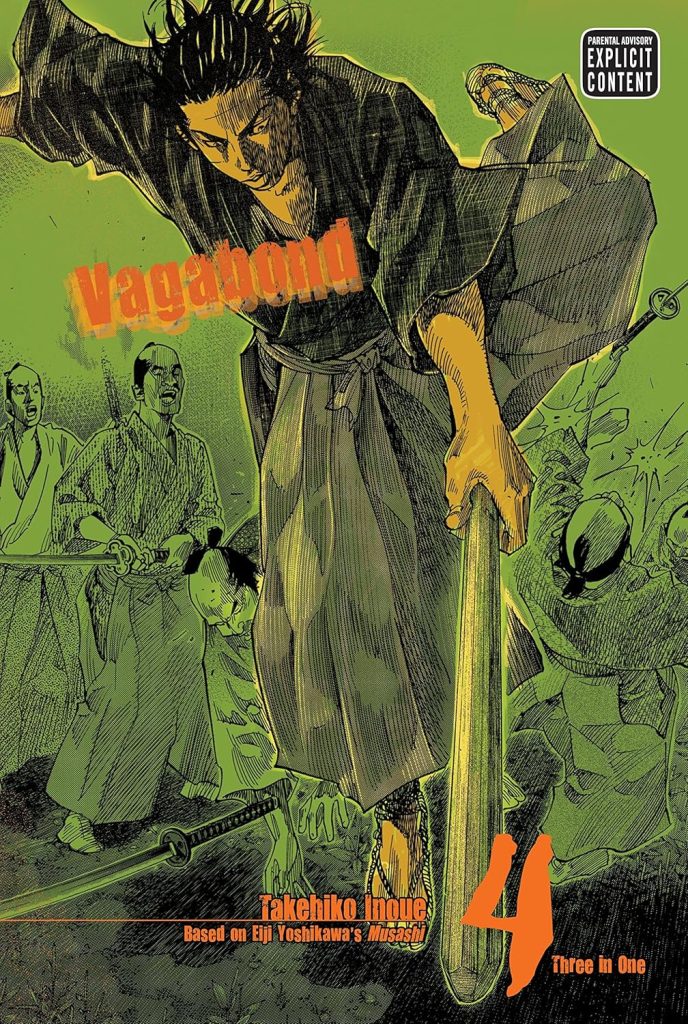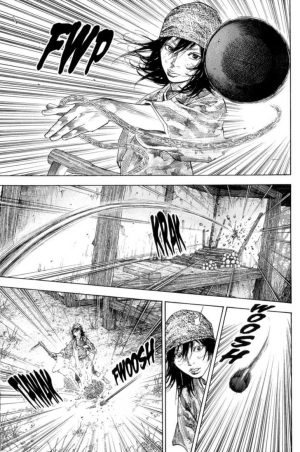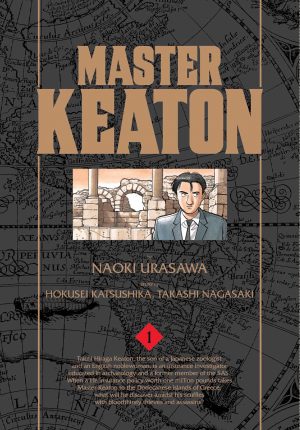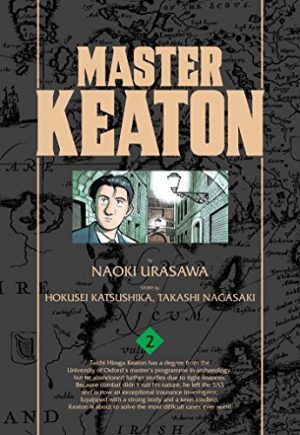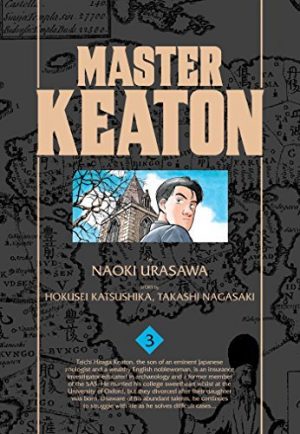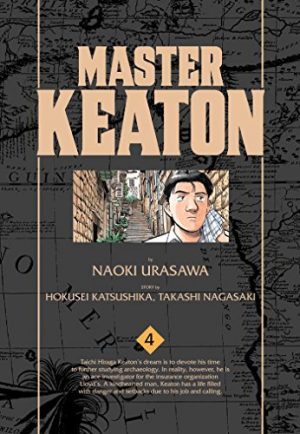Review by Karl Verhoven
Vagabond is the story of legendary 17th century Japanese swordsman Miyamoto Musashi, based on a 1926 book of his life story. A swordsman requires challenges, particularly an up and comer wanting to make a name for himself, and Musashi has determined his next target will be the respected Yagyū organisation. What he doesn’t know is that the Yagyū’s head is now elderly and infirm, and in no condition to fight, nor that Musashi’s love Otsū is caring for him.
The previous bulky edition ended with Musashi having provoked the fight he intended with the Yagyū warriors. Takehiko Inoue’s visual choreography is always impeccable, but so far into the series there’s a feeling that familiar ground is being covered. The Yagyū have a formidable reputation, and there are several of them. It takes most of what was originally collected as Vagabond Vol. 10 to clear a path. If read in isolation, it’s an imaginatively thrilling battle in which the impetus shifts, and good use is made of the environment. The remainder, though, is original and moves into completely different territory.
Because Musashi throws himself so willingly into combat, it’s sometimes forgotten that his is also a spiritual journey, one of an intelligent man considering life and his role in it, but that really comes into play in the middle section. At one point it seems as if he’s at the pinnacle of his aims only to have it pointed out that perhaps what he wants isn’t of great value. It prompts a reconsideration of what he is: “It’s only about yourself… how trivial”. After that we see a rapid departure and Musashi’s only participation for some while is a couple of chapters achieving a monumental feat.
If there’s a fault to Vagabond it’s Inoue’s refusal to give context to reintroduced characters, so someone not seen for several hundred pages of this epic will put in a return appearance, and readers are expected to remember who they are and what they want. That’s not an issue with Matahachi, Musashi’s buddy from the series’ opening pages. They’ve taken very different paths, although both have earned a reputation. In Matahachi’s case, though, it’s under the assumed identity of a now dead master swordsman. He’s not one of life’s great thinkers, and it’s surprising that his masquerade has taken so long to crumble. Unfortunately it has tragic consequences.
Musashi returns to centre stage for the final chapters where he makes the acquaintance of someone with a fearsomely different fighting style, only to discover someone he already knows. It’s another occasion where the reader’s memory may not match Musashi’s, and sets up an intriguing situation to be picked up in the next volume.
While there’s a feeling of Inoue drifting into complacent repetition to begin with, the remainder of this collection thoroughly washes away any such thoughts by constantly rolling into new territory. If you only want the very best, it’s possible to find used copies of Vagabond Vol. 11 and Vagabond Vol, 12, but this is the connoisseur’s choice.
